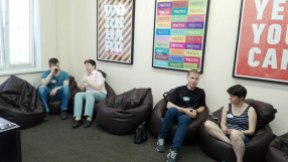This post expands on the article I wrote for ELTA newsletter. The post consist of two parts (Part 1 here). Part 1 focuses on the definition and components of fluency, while Part 2 suggest practical ways of developing fluency and addressing specific issues hindering fluency.
In Part 1, I talked about what speaking fluency is and what might stop students from developing it. Now, armed with that knowledge, let’s see what we can do to overcome those difficulties.
Fluency Development Strategy #1: Repetition and time pressure
How many times have we heard repetition is the mother of all learning? Turns out, it really is! Paul Nation, my go-to source for everything ESL, suggest “repeated practice on the same material so that it can be performed fluently” as an effective approach to developing fluency (in Nation & Newton, 2009:157). To ensure that learners do not become bored with repeating the same message, they suggest changing the audience for each subsequent retelling, and introducing a time limit.
4/3/2
A technique that incorporates both suggestions is 4/3/2 where learners repeat the same text with the time limit decreasing from 4 to 3 and then 2 minutes, speaking to a different partner every time. Research (Nation, 1989) shows that 4/3/2 helps learners increase the rate of speech and reduce pauses and hesitations. In addition, repeat performances help learners build confidence in speaking.
I like to combine this technique with a task-based approach for a complete speaking lesson which can be done with minimum (or none!) materials and be tailored to any level/grammar or vocabulary area/subject matter.
In this example, pre-intermediate level learners are revising the use of past tense and the language related to people’s lives and life events by delivering a short talk about their personal hero.
The lesson handout is here: Personal Hero Lesson Handout and while it can’t be readily used by anyone else (because it talks about my personal hero who happens to be my grandmother), it serves as an example of how easy it is to create a lesson out of thin air, and may be used as a template of sorts.




